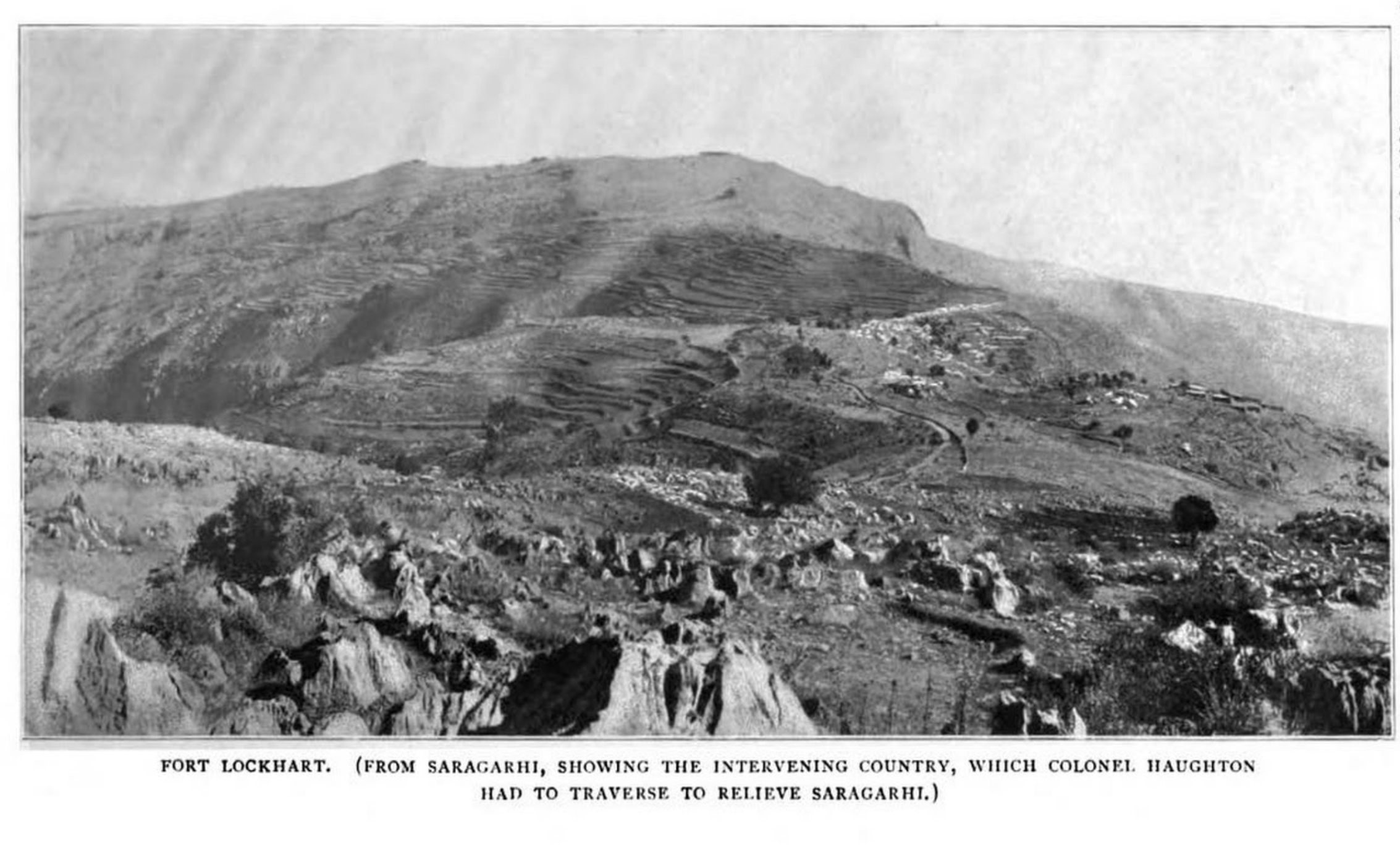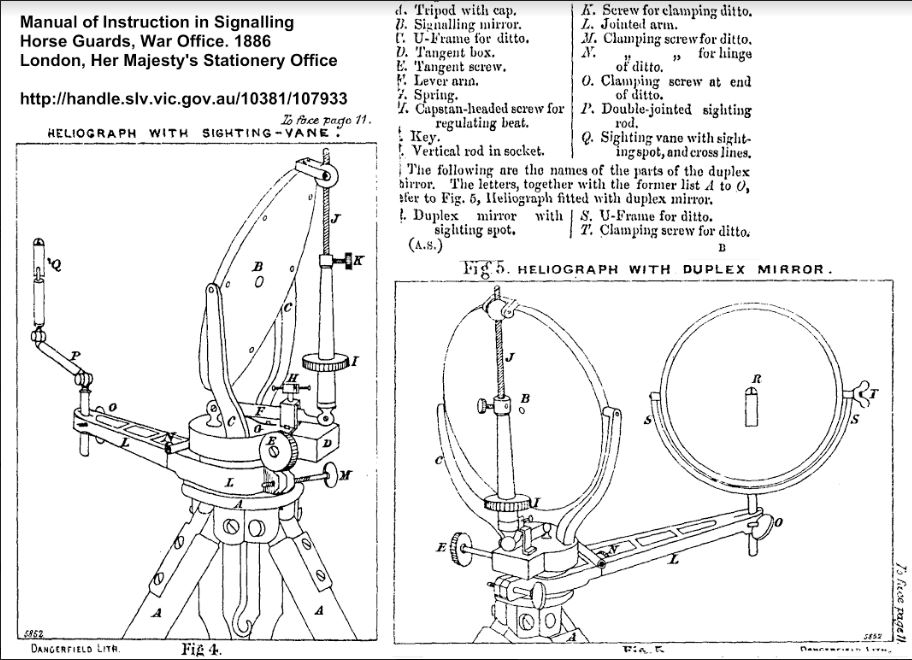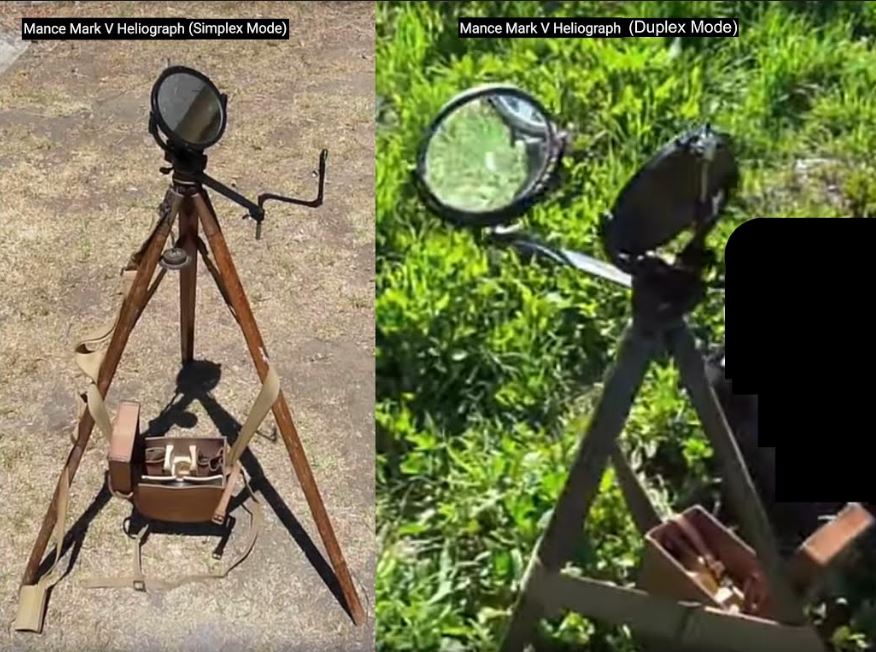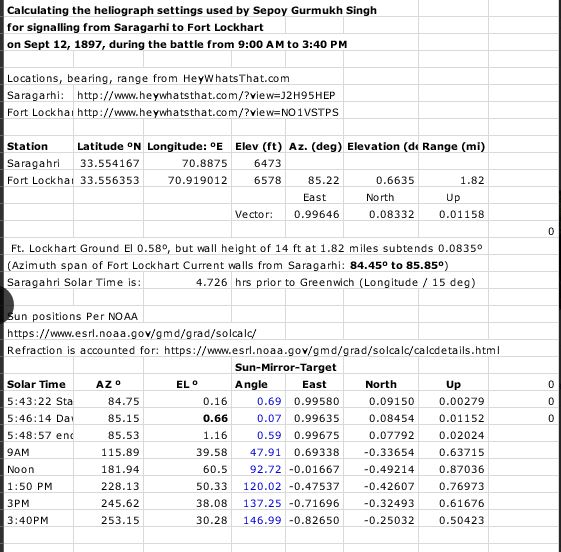Sunrise for the 21 at Saragarhi
Leave a CommentThe defenders of Saragarhi saw the sun rise over Fort Lockhart on the day of battle!
By Richard Fowell, expert heliographer
While doing some calculations to determine the heliograph settings to signal from Saragarhi to Fort Lockhart, I spotted something that would make a memorable scene in any film about the battle of Saragarhi. Viewed from Saragarhi, the sun rose over the walls of Fort Lockhart that day!
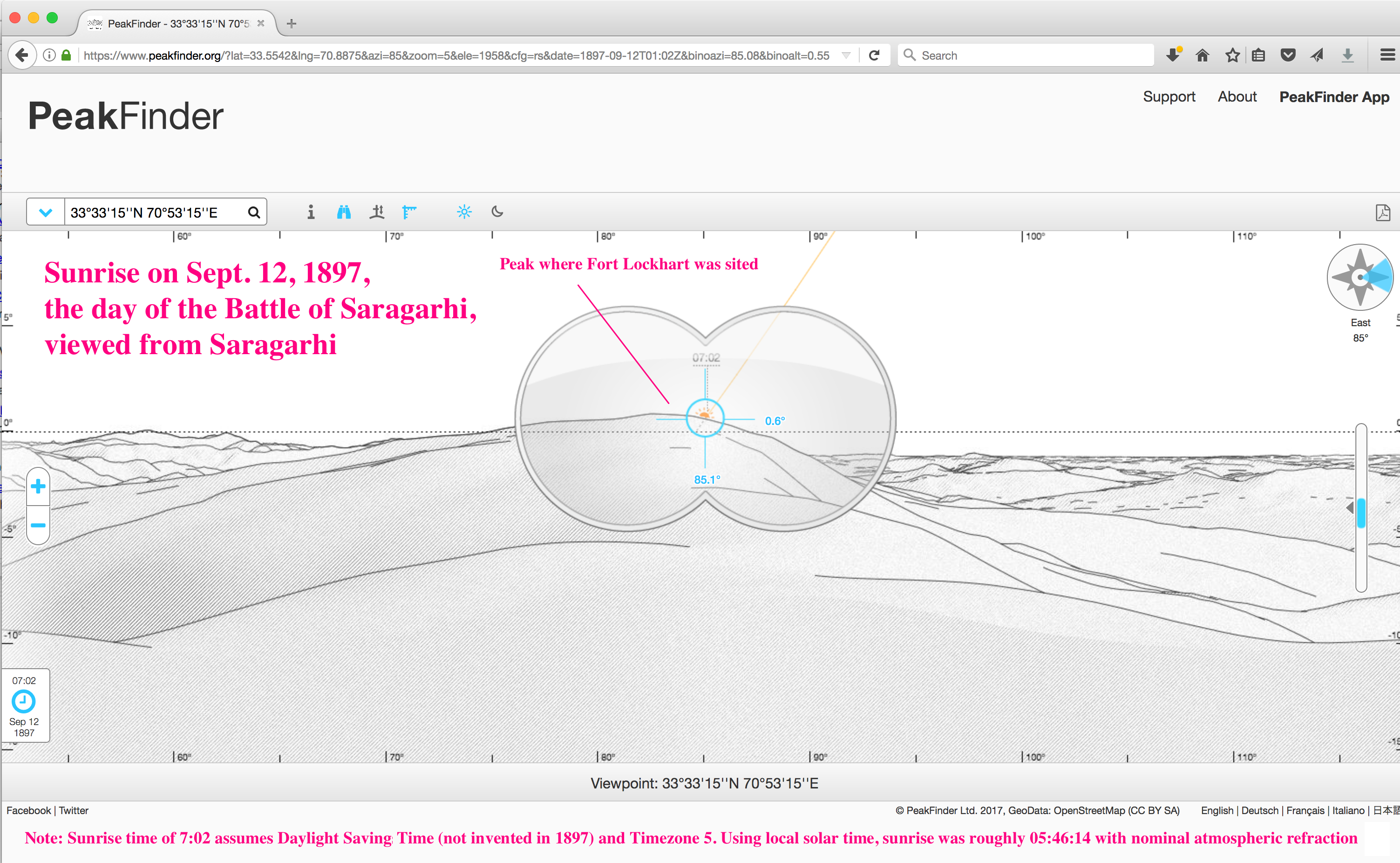
I stumbled over this using the tools below, but as a quick sanity check, here’s a “quick look” at the sunrise on that day from Saragarhi using Peakfinder (screenshot also attached).
PeakFinder’s sunrise time of 7:02 apparently assumes Daylight Savings Time (not invented in 1897) and timezone 5 – my computations below use solar time at Saragarhi. Note that the direction of sunrise does not depend on the choice of time reference.
The profile that Peakfinder shows has the high point of the hill a bit left of sunrise, but the height profiles in the digital elevation models are a bit uncertain – satellite photos are a much more accurate guide to horizontal positions.
The more detailed look is the second attachment, using the solar calculator at the US Government website of the National Oceanic and Atmospheric Administration (NOAA): https://www.esrl.noaa.gov/gmd/grad/solcalc/
You can duplicate my results (screenshot attached) with the following inputs to: https://www.esrl.noaa.gov/gmd/grad/solcalc/
Latitude 33.554167 Longitude 70.8875 [1] (Saragarhi)
Time Zone: 4.726 [ Solar time: the latitude divided by 15 deg]
Day Month Year: 12 Sept 1897 ( Battle of Saragarhi)
Time: 05:46:14 [2]
This is my calculated local solar time when the center of the sun would appear at the parapet of Fort Lockhart viewed from Saragarhi[2]. You will note that at this point, the sun direction is through the cluster of modern-day buildings at the top of the hill where Fort Lockhart stood.
There are, of course, various uncertainties in the exact location of Saragarhi and Fort Lockhart at the date of the battle, but based on the best information I have at the moment, the sunrise viewed from Saragarhi rose over the walls of Fort Lockhart that day.
Regards,
Richard A. Fowell
[1] The position I used for Saragarhi is the high point of the ridge, as we have discussed,
which jibes with the official report and the photo taken from Saragarhi of Ft. Lockhart.
[2] The time is chosen to get a sun elevation angle of 0.66 deg, which is what I calculate to be the apparent height of the Ft. Lockhart parapet
The 0.66 deg elevation is based on 0.58 deg elevation of the ground at Ft Lockhart viewed from Saragarhi
plus 0.08 deg for the 14 ft high walls Fort Lockhart is credited with (at range of 1.82 miles)
I got the ground elevation angle viewed from Saragarhi from http://www.heywhatsthat.com/?view=J2H95HEP
(actually, rechecking this, the elevation of the base of the far walls is 0.57 deg, and range to there is 1.85 miles, but close enough, I won’t recalculate).
[3] The legalese involved in using data from the NOAA site, crediting it, etc., is covered here:
https://www.esrl.noaa.gov/gmd/about/disclaimer.html
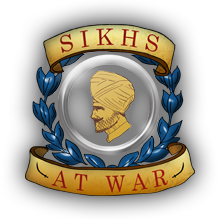


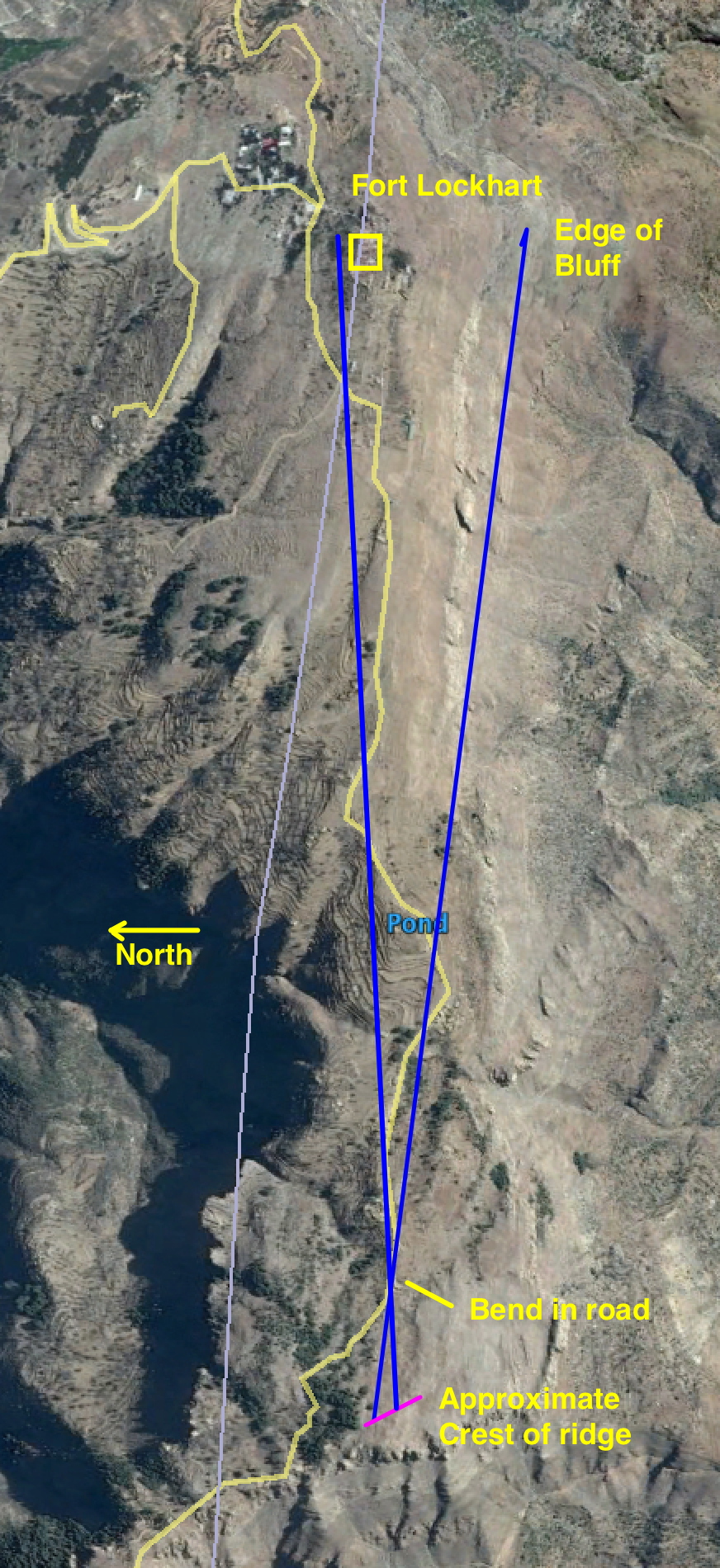
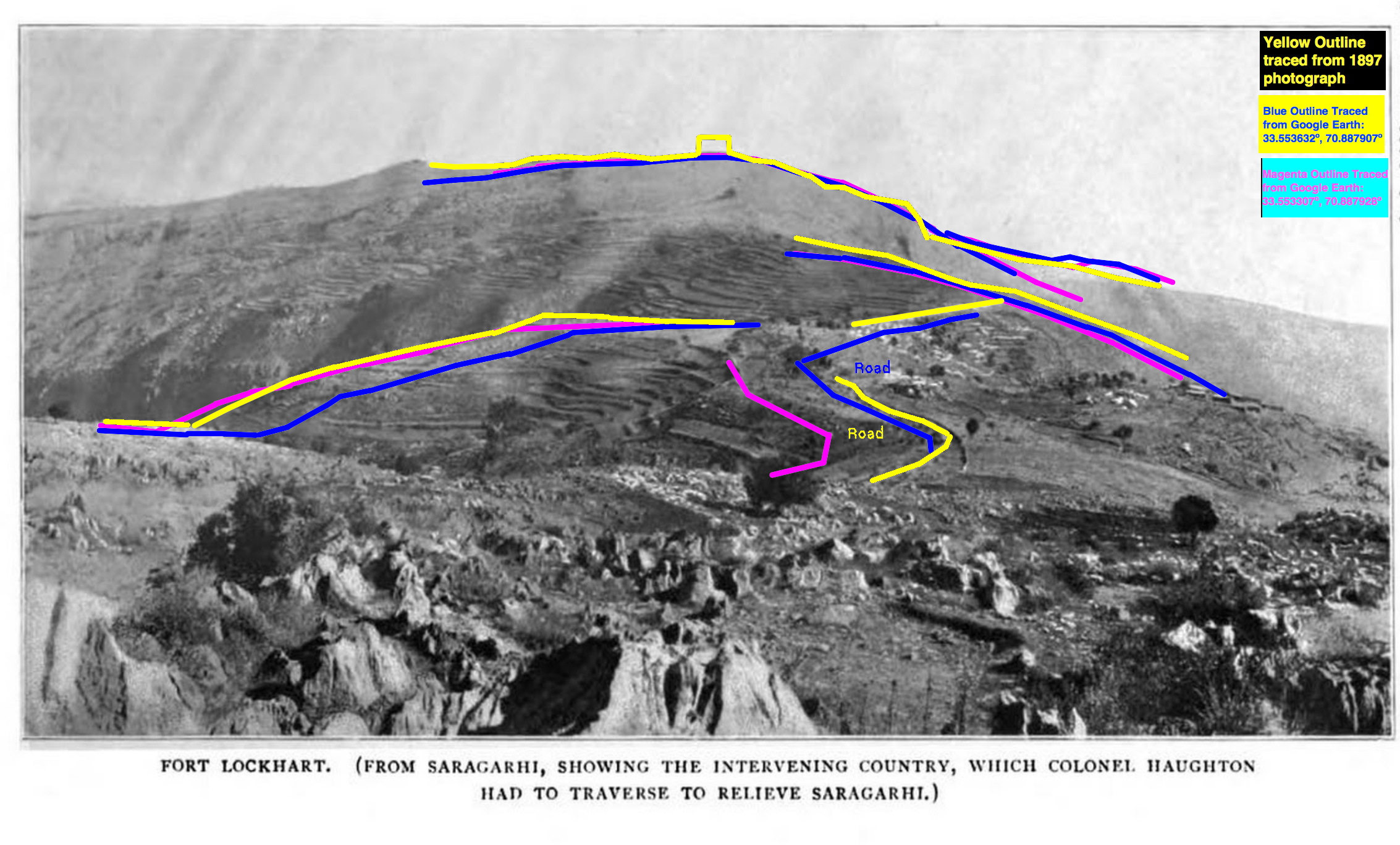 I’ve been using the first one to narrow down the location of the post, but wanted to check how close the location it was taken from was to the post.
I’ve been using the first one to narrow down the location of the post, but wanted to check how close the location it was taken from was to the post.